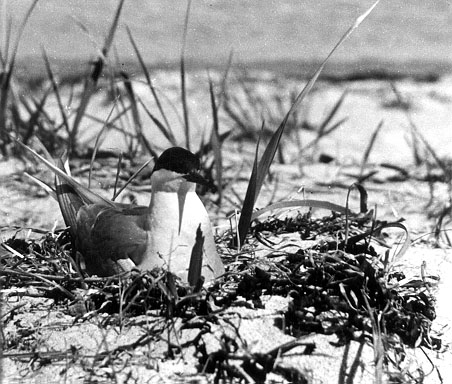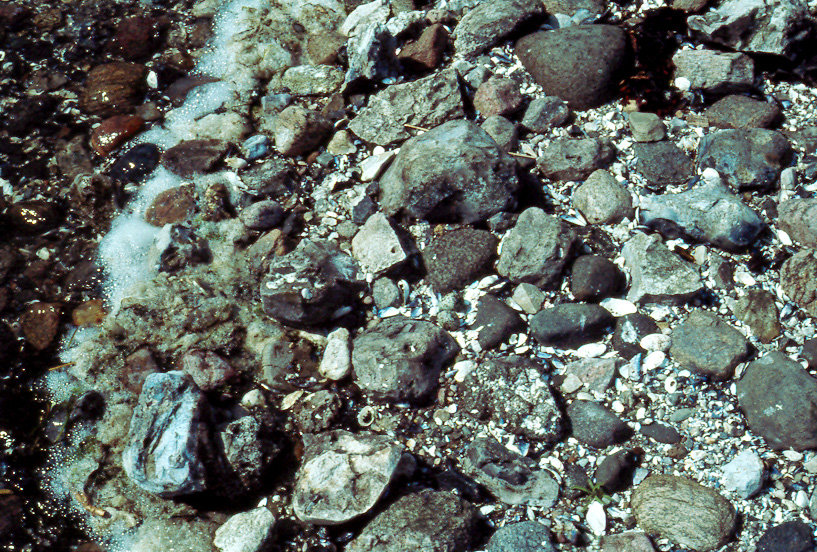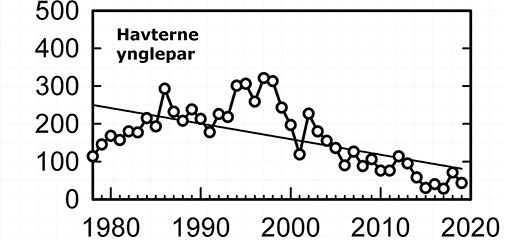Arctic Tern
(Sterna paradisaea).
A brooding Arctic Tern.
The Arctic Tern breeds - like the Common Tern (Sterna hirundo) - on most of the islands in the fjord.

The Arctic Tern nest is in the middle of the picture.
It often builds its primitive nest so close to the edge of the beach that it is flooded when there is a strong on-shore wind. It frequently breeds in mixed colonies with Common Tern. The Arctic Tern can live even longer than the Common Tern. On the other hand it usually lays only two eggs, while the Common Tern lays three, which keeps the populations in balance.
The oldest specimen on the fjord lived for 28 years. It was ringed when young on Æghom in 1986 and was found dead on Hyldeholm off Skuldelev in 2014. They do not usually live so long. The average age of the Arctic Tern breeding in the fjord is 8 years, while that of the Common Tern is 7.

Menu: stickleback and pipefish.
The Arctic Tern feeds primarily on small fish like stickleback, which it dives to catch. The population of breeding Arctic Tern has, unlike the Common Tern’s, increased fairly steadily over the last 25 years. This is probably mainly due to good luck. For one thing the Arctic Tern has not suffered from rat attacks to the same extent as the Common Tern, and for another they start laying eggs about a week earlier, which has frequently saved them from destruction by strong winds, despite the fact that their nests are usually more exposed than those of the Common tern. Their decline in recent years may be due to a decline in the numbers of small fish in the fjord, but unfortunately we know too little about small fish populations. Several of the Arctic Tern’s traditional breeding sites have been used as roosting sites by Cormorant since they moved into the fjord, and these sites become coated in Cormorant droppings. This is certainly a factor in the decline of the Tern population.
The Arctic Tern does not come to the fjord until May, and they migrate again in August. Their migration (like that of the Common Tern) follows the Atlantic coast of Europe, but they go further south and some of them reach Antarctica. Their migratory flight is exceptionally long (their northernmost breeding grounds are up in the Arctic Circle), and in the course of their long lives they cover huge distances – and experience very few hours of darkness!
It can be very difficult to distinguish between The Arctic Tern and the Common Tern in the wild.
Key to the Distribution Map.
Arctic Tern - population trends

Arctic Tern breeding pairs
